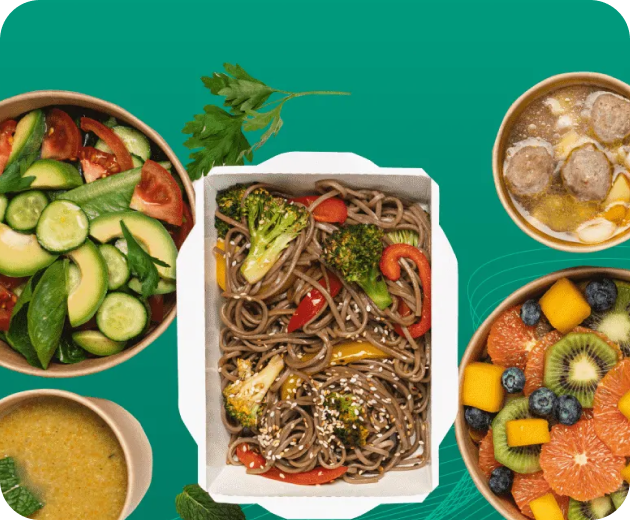CPG vs FMCG: How Consumer Goods Giants Are Adapting to Market Trends
The CPG and FMCG sectors play a major role in the global economy, covering everyday products found in supermarkets, pharmacies, and convenience stores.
While often grouped together, there are key differences between the two.
The global CPG market is expected to grow from $1.94 trillion in 2020 to $2.38 trillion by 2027, with a 6.5% annual growth rate (CAGR).
The FMCG market is also a key part of the consumer goods industry, though detailed numbers are less common.
Overall, the consumer goods market, including FMCG, is projected to grow 1.19% annually, potentially reaching $3 trillion by 2029.
This article compares CPG vs FMCG, providing insights into their respective growth drivers, challenges, and opportunities for businesses.
What is CPG?
CPG (Consumer Packaged Goods) refers to products that consumers purchase regularly but don’t need to buy as frequently as FMCG items.
These goods tend to have a long shelf life, and companies in this sector invest heavily in CPG marketing to cultivate brand loyalty and ensure consistent sales.
- Household items: Cleaning supplies, laundry detergents
- Personal care products: Shampoos, lotions
- Food products: Canned goods, snacks
- Beverages: Bottled water, energy drinks
These products are typically sold in bulk or larger quantities and have a relatively higher price point per unit compared to FMCG goods.
CPG sales strategies often focus on premium positioning, quality, and the long-term benefits of the product.
What is FMCG?
Fast-Moving Consumer Goods (FMCG), as the name suggests, refers to products that sell quickly and are consumed frequently.
These goods are often inexpensive and have shorter shelf lives than CPG products, requiring frequent replenishment.
FMCG companies rely on efficient distribution and effective food retail marketing to ensure their products are always available to consumers.
- Food and beverages: Milk, bread, soft drinks
- Toiletries: Toothpaste, soaps, deodorants
- Perishables: Fresh fruits, vegetables, and ready-to-eat meals
- Over-the-counter medicines: Pain relievers, vitamins
FMCG companies need to prioritize rapid inventory turnover and efficient supply chains due to the high demand and short shelf life of their products.
The key to success in this industry is availability and convenience.
Get an inside look at the strategies powering top CPG brands. Discover how to innovate, adapt, and win with data-backed decisions that move fast—from product development to market execution.
CPG vs FMCG: Key differences
While CPG vs FMCG share similarities in their focus on consumer needs, there are several key differences between the two sectors:
| Factors | CPG Industry | FMCG Industry |
| Shelf Life | Longer shelf life (weeks to years) | Short shelf life (days to weeks) |
| Purchase Frequency | Low purchase frequency | High purchase frequency |
| Price Point | Higher price per unit | Lower price per unit |
| Packaging | Larger, often bulk packaging | Smaller, single-use packaging |
| Distribution | Extensive, often regional or national | Widespread, rapid distribution |
| Marketing Focus | Brand loyalty, quality | Convenience, availability |
Similarities between CPG and FMCG
Despite the differences, CPG vs FMCG industries share many operational strategies and challenges:
| Aspect | CPG & FMCG |
| Focus on consumer needs | Both industries emphasize understanding and catering to consumer demands, using CPG analytics to fine-tune marketing strategies. |
| Data-driven decisions | Both industries increasingly rely on Big Data in the CPG industry to make informed decisions about product development, marketing, and distribution. |
| AI adoption | AI is transforming operations in both industries, particularly in areas like demand forecasting, supply chain management, and CPG marketing. |
| Omnichannel distribution | Both CPG and FMCG companies are adopting omnichannel strategies, including online, retail, and direct-to-consumer sales models. |
How AI and Big Data shape CPG and FMCG
As competition intensifies in both sectors, companies are turning to AI in CPG and Big Data analytics to optimize their operations and stay ahead.
Here’s how these technologies are shaping the future of CPG vs FMCG.
1. Predictive analytics for demand forecasting
Big Data allows CPG and FMCG companies to predict changes in consumer demand by analyzing past sales, seasonal trends, and even external factors like weather conditions.
For example, an AI-driven system can forecast when consumers are likely to buy more FMCG products like bottled water during a heatwave, enabling companies to adjust inventory and distribution accordingly.
2. AI in CPG for personalized marketing
AI is enhancing CPG marketing by enabling companies to deliver hyper-targeted campaigns based on consumer preferences and behavior.
For instance, AI can help brands send personalized product recommendations or discounts to consumers, increasing CPG sales and customer loyalty.
Additionally, AI supports CPG shopper marketing by improving both in-store and online consumer engagement.
AI analyzes shopper habits to create tailored promotions that influence purchases.
For example, brands can recommend complementary products at checkout or offer location-based deals in stores.
This not only boosts sales but also builds stronger customer relationships through timely, meaningful interactions.
3. Efficiency in supply chain management
Both industries rely heavily on smooth supply chains, but FMCG companies face the added challenge of dealing with perishable goods.
AI systems help optimize routes for delivery, identify bottlenecks, and predict potential disruptions, ensuring that products reach consumers on time.
AI in food manufacturing plays a critical role in this optimization by improving inventory management and production schedules.
For example, AI-powered tools can predict the shelf life of perishable items, allowing companies to minimize waste and ensure fresher products reach store shelves.
4. Retail analytics and product placement
Data from in-store purchases and online behavior can provide valuable insights into how products are performing on the shelf.
For example, CPG analytics can reveal the most effective placement of products in a store, while AI can track consumer foot traffic to optimize store layouts. These insights improve both CPG sales and food retail marketing strategies.
5. AI-driven product development
By analyzing data on consumer preferences and market trends, AI helps companies accelerate product development and create offerings that better meet consumer needs.
In the FMCG sector, this is crucial for maintaining high product turnover and keeping up with consumer demand for fresh, new products.
FAQs
“CPG” is common in North America, while “FMCG” is widely used in Europe and Asia. Both describe fast-selling consumer goods, though cultural and market differences shape usage.
FMCG supply chains are often more complex due to higher volume, faster turnover, and broader global distribution compared to smaller-batch CPG models.
Speed of sale, shelf life, and distribution model matter. High-frequency, low-cost goods often fall under FMCG, while niche or branded products lean toward CPG.
Final thoughts
As the consumer goods landscape evolves, understanding the nuances between CPG and FMCG is more important than ever.
While both sectors prioritize meeting consumer demand, they differ in shelf life, pricing, packaging, and distribution strategies.
CPG brands tend to focus on long-term value and brand loyalty, while FMCG companies prioritize speed, convenience, and availability.
From predictive analytics to AI-powered marketing and supply chain optimization, both industries are leveraging technology to stay competitive.
In the broader CPG vs retail conversation, companies that harness data and innovate quickly are better positioned to thrive in today’s fast-moving market.




